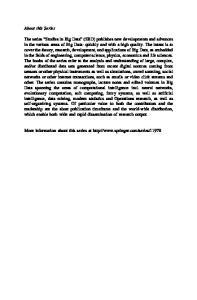Machine learning for nanophotonics
- PDF / 8,003,199 Bytes
- 10 Pages / 585 x 783 pts Page_size
- 16 Downloads / 409 Views
Introduction The inverse design of nanophotonic structures, obtaining a geometry for a desired photonic function (Figure 1a–b), has been a challenge for decades. When treated as a pure optimization problem, due to the highly nonlinear nature of the problem, hundreds to several thousands of iterations are required for a single design task, even with the most advanced algorithms, such as evolutionary or topology optimization algorithms (Figure 1c–d). Recently, modern machine learning algorithms, which have revolutionized a multitude of computerassisted processes, from character and speech recognition, autonomous vehicles, and cancer diagnostics to name a few, have been applied to the inverse problem in nanophotonics and have demonstrated great promise. The major contributions to date that have been published to design nanostructures by utilizing machine learning techniques can be categorized into three categories (Figure 1d). The first, and the most fundamental one, is obtaining a model that is capable of designing nanostructures from the same shape and material it was trained on, but with different properties, such as sizes, angles, and host material. As we discuss in greater detail next, in works that fall within this category the general structure is maintained (particle with eight alternating shells or thin film with m alternating layers as presented
in Figure 2 and Figure 3) and the machine learning algorithm works to provide optimized parameters of the structure.1–4 Our previous work, which introduced a model that was trained on different shapes, such as “H,” “h,” “n,” and “L” with given matched spectra, also falls within this category.5 The second category incorporates models that are able to generalize and design geometries with shapes that differ from the set of shapes used during training, but are still considered to be in the same family (i.e., the model can generalize to other shapes that are similar, but not identical, to the set of shapes it was trained on). Attempts to devise such a model have recently been presented where the parameters of the model are the pixel of a two-dimensional (2D) image, allowing a more versatile and general representation of structures.6 The third category is a model that is able to design any geometry, with any shape, achieving what the deep learning community calls the generalization capability. The generalization ability of such models needs to be verified via a proper holdout test set (i.e., a test set) comprising structures sampled from a completely different distribution than the set the model was trained on. To this end, studies that provide a model that is able to design nanostructures for any spectra should exercise extra care in constructing a test set that would verify the generalization level of the model at hand.
Itzik Malkiel, School of Computer Science, Tel Aviv University, Israel; [email protected] Michael Mrejen, Femto-Nano Laboratory, Department of Condensed Matter Physics, School of Physics and Astronomy, Tel Aviv University, Israel; michael.mrejen@be
Data Loading...











